|
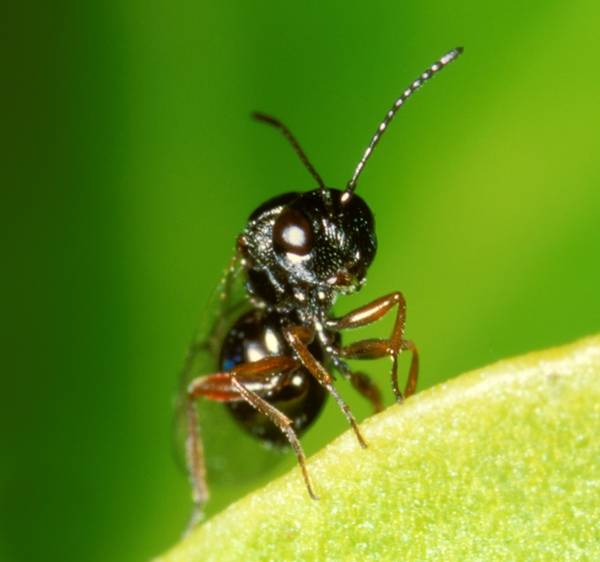
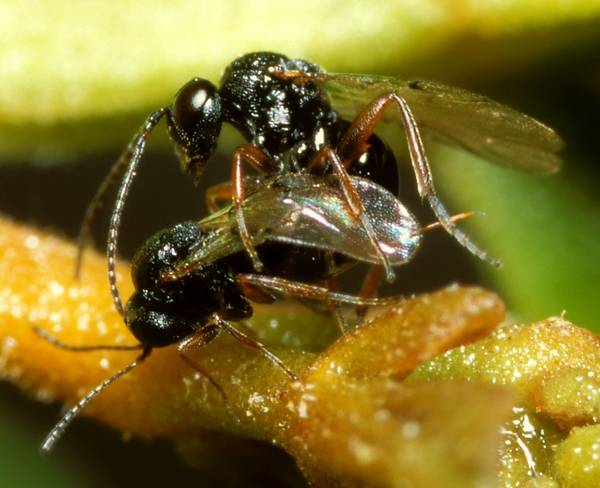 |
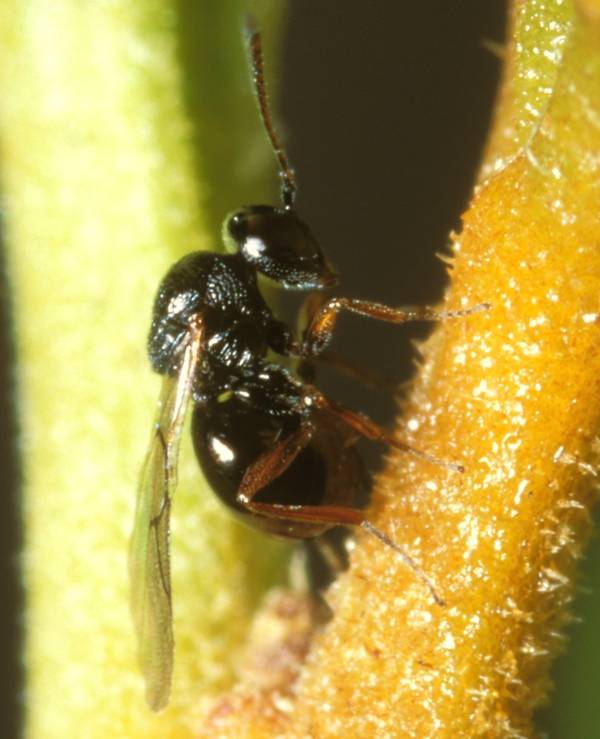 |
|
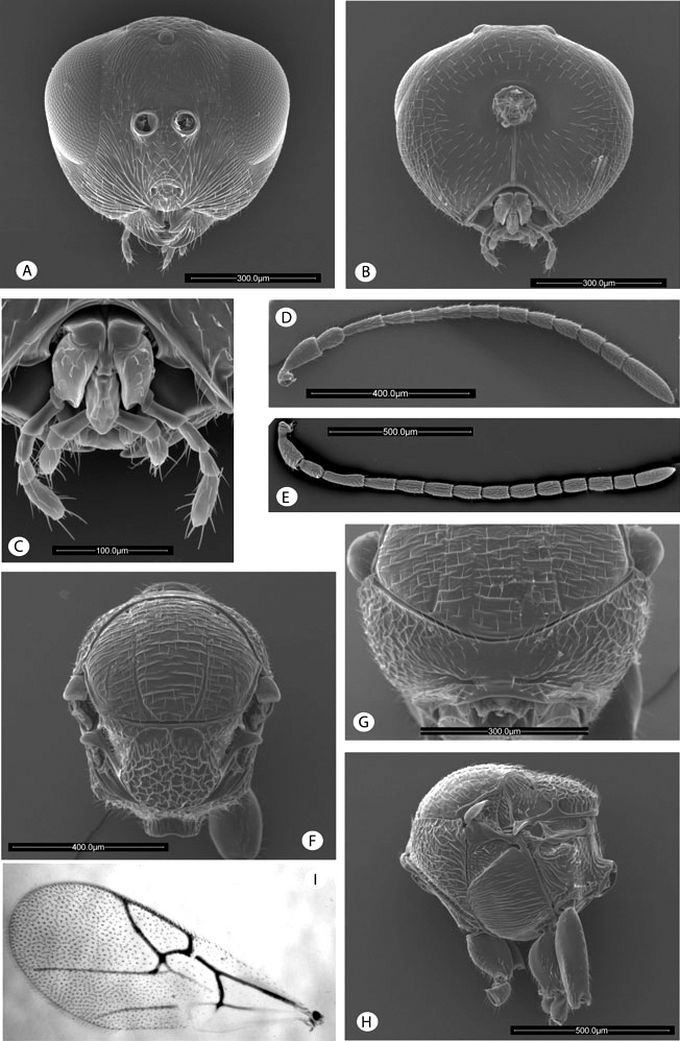
Rhoophilus loewi (scanning electron microscopy). A, head, anterior
view, female; B, head, posterior view, female; C, mouth parts; D,
antenna, female; E, antenna, male; F, mesosoma, dorsal view, female; G,
mesosoma, anterodorsal view, female; H, mesosoma, lateral view, female;
I, forewing, adult female. |
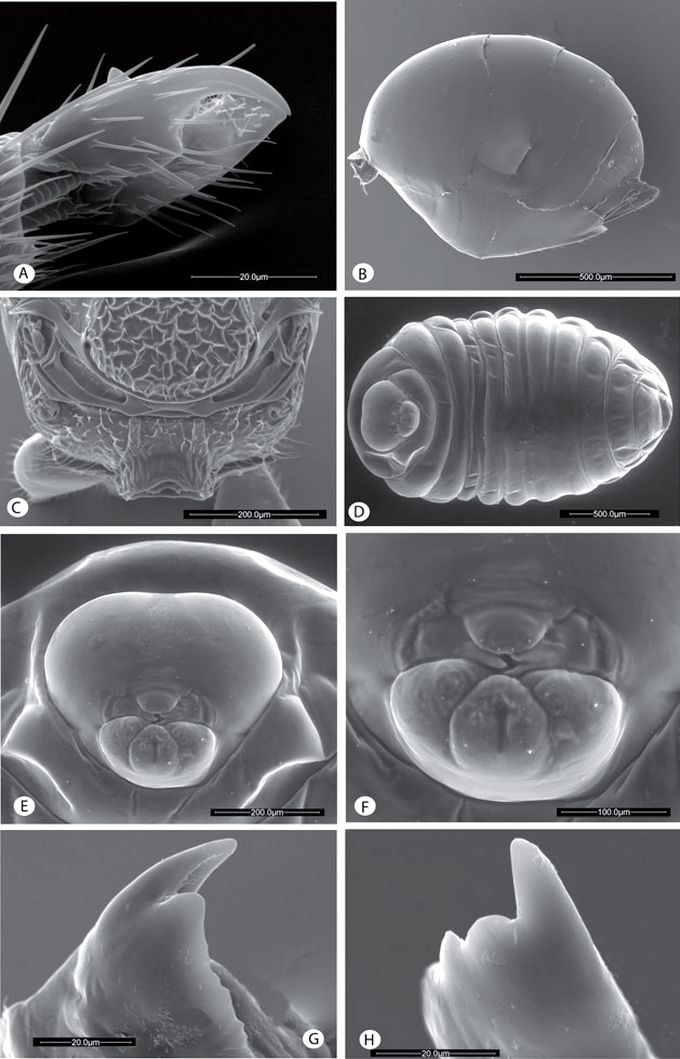
Rhoophilus loewi (scanning electron microscopy). A, tarsal claw,
female; B, metasoma, lateral view, female; C, mesosoma, posterodorsal
view, female; D, terminal larva, ventral view of the body; E, terminal
larva, anterior view of the head; F, terminal larva, anterior view of
mouth parts; G, terminal larva, anterior view of left mandible; H,
terminal larva, anterior view of right mandible. |
|
Distribution |
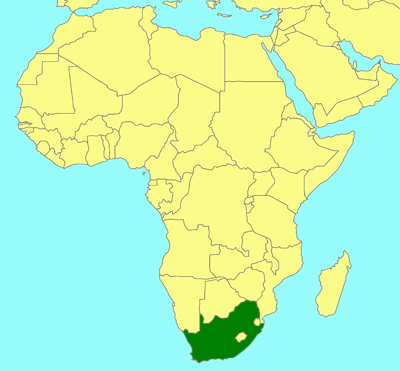
South Africa: Western
and Northern Cape Provinces. |
|
Biology |
Inquiline forming secondary cells in galls
induced by Scyrotis species (Cecidosidae) on Searsia = Rhus
(Anacardiacaea) species. The larval cells expand into the hollow
interior of the host gall resulting in death of the gall inducing moth
larva. |
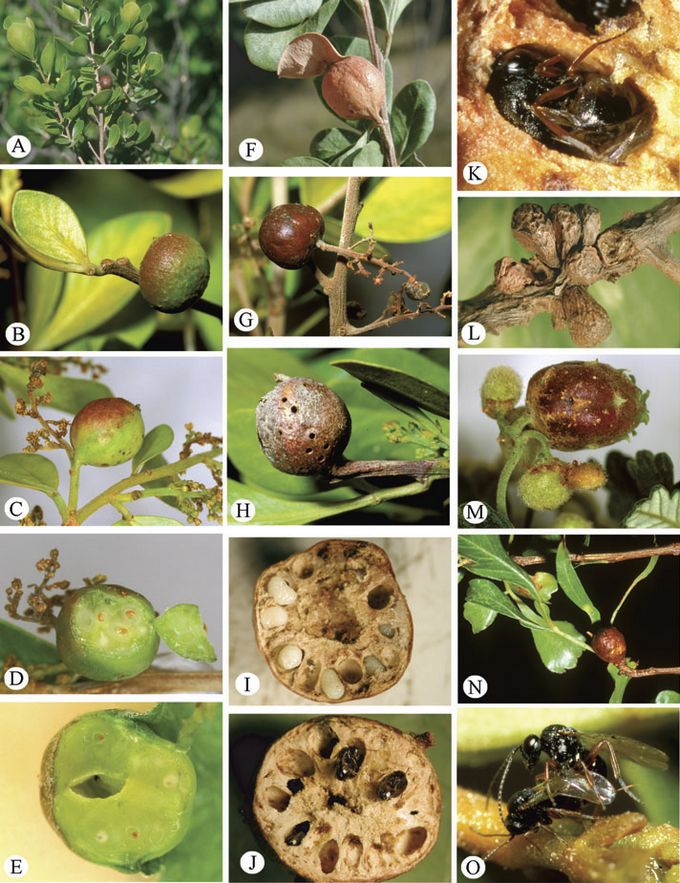
Galls of Rhoophilus loewi. A, B, leaf galls on Searsia lucida;
C, flower gall on Searsia lucida; D, young gall cut open showing
early instar Rhoophilus loewi larvae in situ; E,
cross-section of young gall showing early instar Rhoophilus loewi
larvae in situ surrounding the central Scyrotis locule; F,
older woody leaf gall; G, older woody flower gall; H, old woody gall
with Rhoophilus exit holes; I, cross-section of older woody leaf
gall showing Rhoophilus loewi terminal-instar larvae in situ;
J, cross-section of the same galls showing the Rhoophilus loewi
adults shortly before emerging; K,
Rhoophilus loewi
adult in gall cavity shortly before
emerging; L, stem galls on Searsia undulata; M, Flower gall on
Searsia incisa; N, Leaf gall on Searsia undulata; O, Rhoophilus
loewi adults in copula on Searsia lucida. |
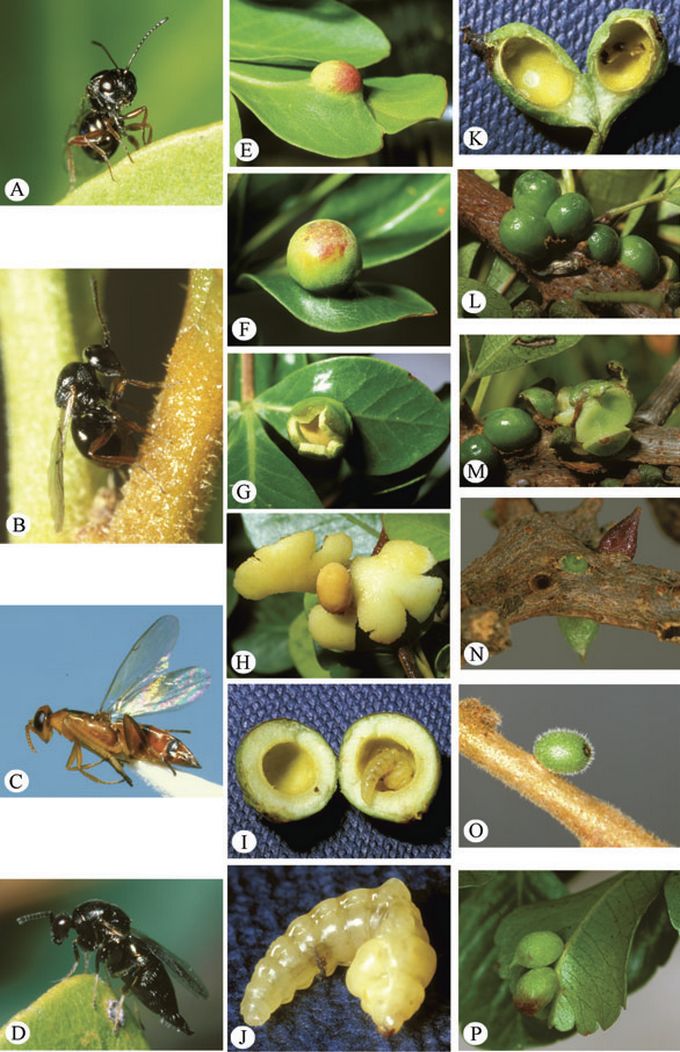
Rhoophilus loewi, chalcid parasitoids
and Scyrotis galls. A, Rhoophilus loewi adult; B, R.
loewi ovipositing; C, Neanastatus rufatus (Eupelmidae)
parasitoid of Scyrotis larva; D, Ormyrus sp. 1, probable
hyperparasitoid of Scyrotis larva; E, F, Scyrotis leaf
galls on Searsia lucida; G, Scyrotis leaf gall on
Searsia lucida starting to exfoliate; H, exfoliated Scyrotis leaf
gall on Searsia lucida showing jumping bean, which will drop to
ground; I, cross-section of Scyrotis leaf gall on Searsia lucida
showing final instar Scyrotis larva; J, final-instar Scyrotis
larva; K, cross-section of Scyrotis leaf gall on Searsia lucida
showing parasitized Scyrotis larva on the right and chalcid
ectoparasitoid larva on the left; L, stem galls on Searsia laevigata;
M, stem galls on Searsia laevigata with exfoliated gall after
jumping bean has dropped; N, pixie-cap stem galls on Searsia incisa;
O, second type of stem gall on Searsia laevigata; P, pixie-cap leaf
galls on Searsia undulata. |
References
|
Lobato-Vila, I & Bae, J & Roca-Cusachs, M & Kang, M & Jung, S & Melika, G & Pénzes, Z & Pujade-Villar, J. 2022. Global phylogeny of the inquilinous gall wasp tribe Synergini (Hymenoptera: Cynipoidea: Cynipidae): first insights and establishment of a new cynipid tribe. Zoological Journal of the Linnean Society. http://dx.doi.org/10.1093/zoolinnean/zlab085
Mayr,
G. 1881. Die genera der gallenbewohnenden Cynipiden. Jahresberichte
der Rossauer Communal Oberrealschule im I. Bezirke 20:
1–38.
van Noort, S, Buffington ML & Forshage, M. 2015.
Afrotropical Cynipoidea (Hymenoptera). ZooKeys 493: 1-176. doi: 10.3897/zookeys.493.6353
van
Noort, S., Stone, G.N., Whitehead, V.B. & Nieves-Aldrey, J.L.
2007.
Biology of Rhoophilus loewi (Hymenoptera: Cynipoidea:
Cynipidae), with implications for the evolution of inquilinism in gall
wasps. Biological Journal of the Linnean Society
90: 153-172.
https://doi.org/10.1111/j.1095-8312.2007.00719.x |
Credits
|
Photographs and map illustration © Simon van Noort (Iziko Museums of
South Africa); SEM's © Jose-Luis Nieves-Aldrey.
Matt Buffington (Systematic Entomology Laboratory, USDA/ARS) and Mattias Forshage (Swedish Museum of Natural History) both played an integral role in the development of the Cynipoidea pages.
|
|